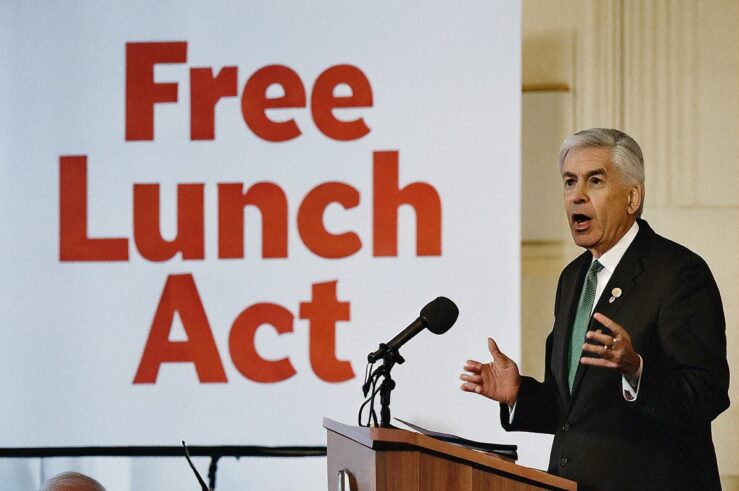On April 15, President Obama issued Executive Order 13725, “Steps to Increase Competition and Better Inform Consumers and Workers to Support Continued Growth of the American Economy” (“the Order”). At first blush, the Order appears quite promising. It commendably (1) praises competitive markets as a cornerstone of the American economy, and (2) sets the promotion of competitive markets as “a shared priority across the Federal Government.” The Order then directs executive branch departments and agencies (“agencies”) with “authorities that could be used to enhance competition” to “eliminate regulations that restrict competition without corresponding benefits to the American public.” Furthermore, agencies are to identify ways they “can promote competition through pro-competitive rulemaking and regulations” and “by eliminating regulations that restrict competition without corresponding benefits to the American public.” What’s more, within sixty days agencies shall report to the White House:
“[R]ecommendations on agency-specific actions that eliminate barriers to competition, promote greater competition, and improve consumer access to information needed to make informed purchasing decisions. Such recommendations shall include a list of priority actions, including rulemakings, as well as timelines for completing those actions. . . . Subsequently, agencies shall report semi-annually to the President . . . on additional actions that they plan to undertake to promote greater competition.”
Finally, the Order praises the value of federal antitrust enforcement, and directs agencies to cooperate with the two federal antitrust enforcers, the U.S. Federal Trade Commission and the U.S. Department of Justice.
While a presidential nod to the importance of competition and the benefits of procompetitive regulatory reform is always welcome, I fear that the Order is little more than cheap symbolism and is not intended to have real effect. (I hope, of course, that I am wrong about this.) Similarly, technology policy writer and fellow Truth on the Market blogger Kristian Stout has opined that “there is nothing in the Order . . . to provide any confidence that competition will, in fact, be promoted.” This pessimism, unfortunately, is warranted. It stems from the Obama Administration’s sad history of pursuing policies that are antithetical to procompetitive regulatory reform.
In an April 19 commentary on the Order, Susan Dudley, Director of George Washington University’s Regulatory Studies Center, pointed out that the Council of Economic Advisers Issues Brief accompanying the Order (“Brief”) made no reference to the bipartisan deregulatory successes of the 1970s and 1980s, which featured the elimination of certain agencies and the “removal of unnecessary regulation in several previously-regulated industries, with resulting improvements in innovation and consumer welfare.” Moreover, as Dudley further explained, the Obama Administration’s longstanding anticompetitive and pro-regulatory policies fly in the face of the procompetitive regulatory reform goals that inform the Order and the Brief:
Recent years have seen a resurgence of economic regulation, which may be contributing to the decline in competition and innovation that the issue brief decries. Regulations under the Affordable Care Act and Dodd-Frank Act, for example, limit prices, control entry, and constrain service quality. The flurry of standards mandating the energy-efficiency of appliances and fuel-economy of vehicles restricts consumer choices. And, many would argue that Federal Communications Commission’s net neutrality rules and the Department of Labor’s fiduciary rules—two areas that . . . [the Brief] highlight[s] as illustrating the “pro-competition progress” on which the executive order will build—are indeed anticompetitive, limiting the arrangements that could emerge from competitive markets, and potentially harming innovation.
The ever-increasing size and scope of the economic harm imposed by the Obama Administration’s regulatory programs, alluded to by Dudley, has been documented in “Red Tape Rising,” an annual report produced by Heritage Foundation scholars James L. Gattuso and Diane Katz. The 2015 Red Tape Rising report (the 2016 version will be released later this spring) reported these sobering findings (footnotes omitted):
The number and cost of government regulations continued to climb in 2014, intensifying Washington’s control over the economy and Americans’ lives. The addition of 27 new major rules last year pushed the tally for the Obama Administration’s first six years to 184, with scores of other rules in the pipeline. The cost of just these 184 rules is estimated by regulators to be nearly $80 billion annually, although the actual cost of this massive expansion of the administrative state is obscured by the large number of rules for which costs have not been fully quantified. Absent substantial reform, economic growth and individual freedom will continue to suffer. . . . Many more regulations are on the way, with another 126 economically significant rules on the Administration’s agenda, such as directives to farmers for growing and harvesting fruits and vegetables; strict limits on credit access for service members; and, yet another redesign of light bulbs.
To combat this regulatory morass, the 2015 Red Tape Rising study made these recommendations:
Immediate reforms should include requiring legislation to undergo an analysis of regulatory impacts before a floor vote in Congress, and requiring every major regulation to obtain congressional approval before taking effect. Sunset deadlines should be set in law for all major rules, and independent agencies should be subject—as are executive branch agencies—to the White House regulatory review process.
If the Obama Administration is truly serious about procompetitive regulatory reform, and wants to confound the skeptics, it should endorse the Red Tape Rising recommendations as follow-on steps taken in light of the Order. Also, the Administration should take additional specific helpful actions, including, for example: (1) requiring that the agency regulatory reform recommendations called for by the Order be evaluated by the Office of Management and Budget’s expert regulatory review arm, the Office of Information and Regulatory Affairs (OIRA); (2) publicly committing to rooting out of anticompetitive and non-cost-beneficial regulations, on the basis of OIRA reviews of agency recommendations; and (2) preparing a discrete legislative package of targeted statutory reforms to diminish the burden of federal regulation, which could be taken up by the next Administration. Simultaneously, the White House could recant its prior public support for over-regulatory initiatives taken by specific agencies, such as its endorsement of anti-innovation Federal Communications Commission “net neutrality” (see a scholarly critique here) and set-top box (see my critical commentary here) rules. By acting in this manner, the Obama Administration would demonstrate its commitment to the spirit of the Order, and, thus, to the promotion of a more vibrant and efficient American economy.
In order to move in the direction I recommend, the Administration would have to reject the notion that market competition can somehow be micromanaged and improved upon by enactment of enlightened “pro-competitive” regulatory guidance. This notion, which was articulated by Oscar Lange among many others (see, for example, Lange’s “On the Economic Theory of Socialism,” here and here), presumes in the extreme that government bureaucrats are able to set optimal economy-wide rules and prices that generate economic efficiency. Friedrich Hayek effectively refuted this notion as a matter of theory (see, for example, Hayek’s “The Use of Knowledge in Society”), and nearly a century of failed socialist experiments have refuted it as a matter of empirical fact. What’s more, even “limited” issue-specific government regulation has too often reduced economic welfare and efficiency, as predicted by public choice theory (see, for example, here). Perhaps some wise senior official will take these teachings to heart and convince the Obama White House to apply them henceforth – but I am not holding my breath.




